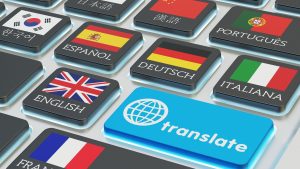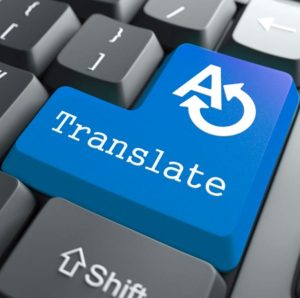The idea of automatically translating texts by means of iphone translator app was born at the same time as the advent of electronic computers.
In 1949, mathematician W. Wirer proposed to the scientific community that computers be used for translation. Almost seventy years have passed since then, but the problem has not been fully solved and is unlikely to be solved in the foreseeable future. This is due to the fact that in the correct formulation of “computer translator” is almost “artificial intelligence”, the implementation of which is still beyond.
In the early stages of translation software development, the emphasis was on formalizing language constructions of grammar, semantics. Attempts were made to use extra-linguistic information. There were good results for analytical languages – English, German and others. The situation with synthetic languages, such as Russian, was much worse, due to more complex grammar and the variety of rules for constructing the “right” phrases.
The algorithmic translation model that automatic translators tried to use consisted of two groups of blocks: blocks of source text analysis and blocks of text synthesis in the target language. For the source language is analyzed morphology, vocabulary, syntax and semantics. For the target language, syntactic, semantic, and morphological synthesis are performed.
At the present stage, it has become clear that formal methods work, but with difficulty.
Increased performance of processors, increasing amounts of memory have prompted the search for solutions based on the experience gained in formal language analysis and the use of databases. Preliminary analysis reduces the number of views of “samples” to an acceptable number. Then the most appropriate phrase in the target language is selected from the database. More: http://lingvanex.com/english-to-spanish/.
This approach has provided an acceptable level of translation of simple “everyday” phrases. And the use of specialized dictionaries (indirect use of background information) made it possible to get a good quality translation of technical texts.
Computer translation as a formal process completely eliminates the translator’s non-verbal knowledge about the world around him/her, about the context in the broad sense of the phrase being translated, about the purpose of translation, about the diversity of the world. Therefore, such translation can be used as a great human aid, but no more. Machine translation and related automation tools are good for basic communication (in a restaurant, on the road, on the street) and are very useful for professionals to translate specialized technical texts. Proposed computer “sloppy” translation the user or a professional in a short time will turn the text that meets the linguistic standards and vocabulary of its subject area, saving time on working with the keyboard.
However, we cannot yet expect a computer to translate Nikolai Leskov’s The Enchanted Wanderer into English. Artificial intelligence is still a long way off. Therefore, for translations from any language we recommend to apply to professionals in special bureaus.

